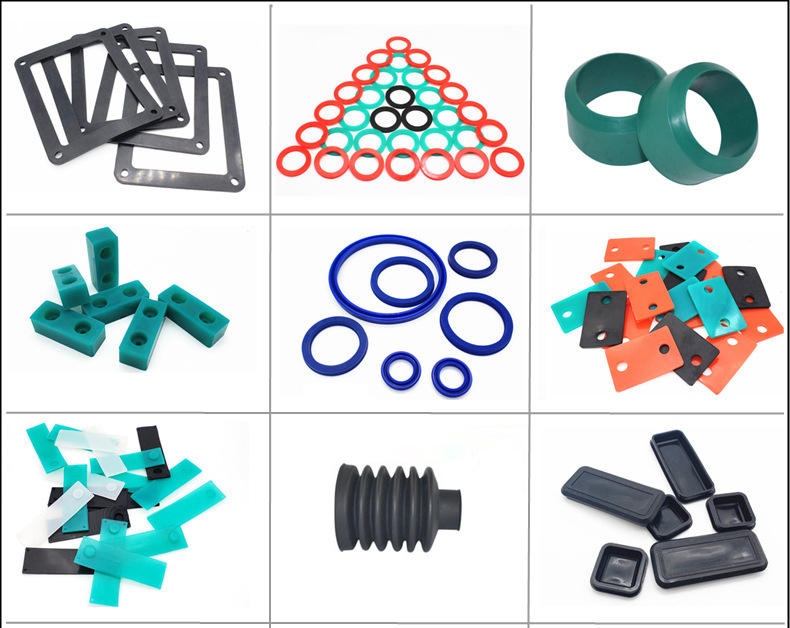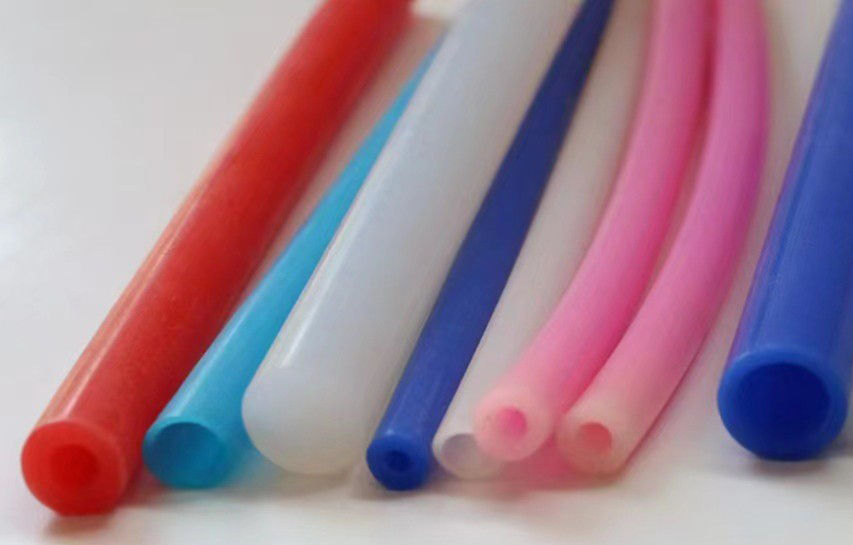Let's explore the main application differences between silicone rubber products made via rubber molding and those made via rubber extrusion, specifically when both utilize a silicone rubber compound prepared by the conventional precipitation method.
While the same base silicone rubber compound prepared by the conventional precipitation method is used, rubber molding and rubber extrusion are two distinct forming processes. This leads to differences in the final product's shape, structure, and performance characteristics, which in turn determine their suitability for different application areas.
Products created by rubber molding (such as compression molding or injection molding) are primarily used for manufacturing three-dimensional complex shapes and discrete parts. The rubber molding process, through precise mold design, allows for the creation of various features like indentations, holes, variable cross-sections, and even embedded inserts.
Application Examples:
O-rings
Complex-shaped gaskets and seals
Keyboard keypads
Medical device components
Vibration isolators
Plug covers
Other intricate functional parts

In contrast, rubber extrusion is primarily used for manufacturing continuous long products that possess a constant cross-sectional shape. The rubber extrusion process pushes the material through a die, resulting in shapes that are relatively simple, consisting of a 2D profile repeated along the length.
Application Examples:
Various tubing (round tubes, square tubes, etc.)
Profiles (D-shaped, P-shaped, U-shaped, etc.)
Sealing strips (for doors, windows, appliances, automotive seals)
Cable insulation and jacketing
Hoses for fluid or gas transfer

Regarding production efficiency and cost, rubber molding typically involves higher mold costs and a longer single production cycle (requiring steps like feeding, closing the mold, curing, opening the mold, part removal, etc.). It is generally suitable for medium to large batch production.
Rubber extrusion, on the other hand, benefits from relatively lower die costs and enables continuous production with high efficiency. This makes it particularly suitable for ultra-large batch production.
In terms of performance focus, parts produced by rubber molding, due to being formed and cured in a closed mold, offer relatively easier control over dimensional accuracy, surface detail, and wall thickness uniformity (for complex shapes), making this method suitable for precision parts with high requirements in these areas. Different hardnesses, colors, and even combinations of multiple materials can be achieved through rubber molding.
Products from rubber extrusion focus more on the material's continuity and integrity, requiring higher tensile strength, tear strength (along the length), elasticity, and sealing performance (when used as sealing strips or tubing).
To summarize the application ranges: Rubber molding is chosen when manufacturing independent parts that require specific three-dimensional shapes, high functional integration, or need to fit precisely with other components.
Rubber extrusion is chosen when manufacturing long, continuous products like tubes, strips, or wires used for connection, transfer (fluid/gas), or linear sealing.
In conclusion, while both processes use the same conventional precipitation method silicone rubber compound, the key difference in application stems from the final product form factor dictated by the respective manufacturing methods. Rubber molding excels at producing complex, discrete parts, while rubber extrusion is ideal for continuous profiles used in various sealing, transferring, and insulating applications.
Contact: Tony Li
Phone: +86-13263299644
Tel: +86-13263299644
Email: sales@ecoviaet.com
Add: No 3 Youyi Road,Tangshan,Huantai,Zibo,China
We chat
